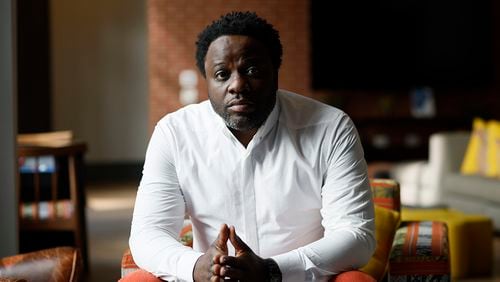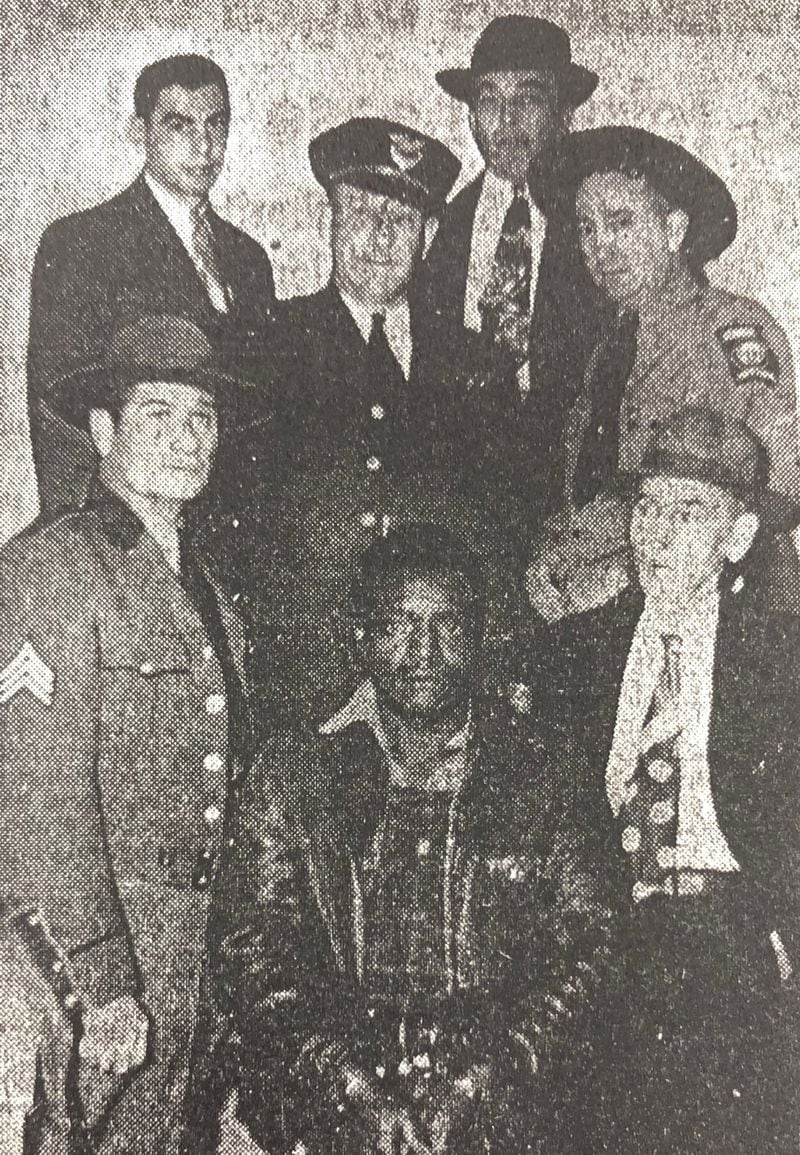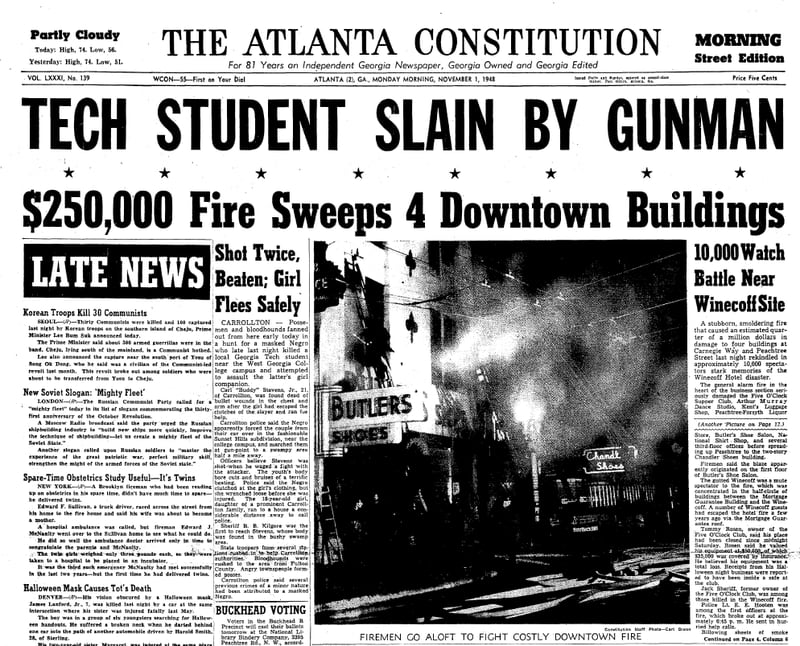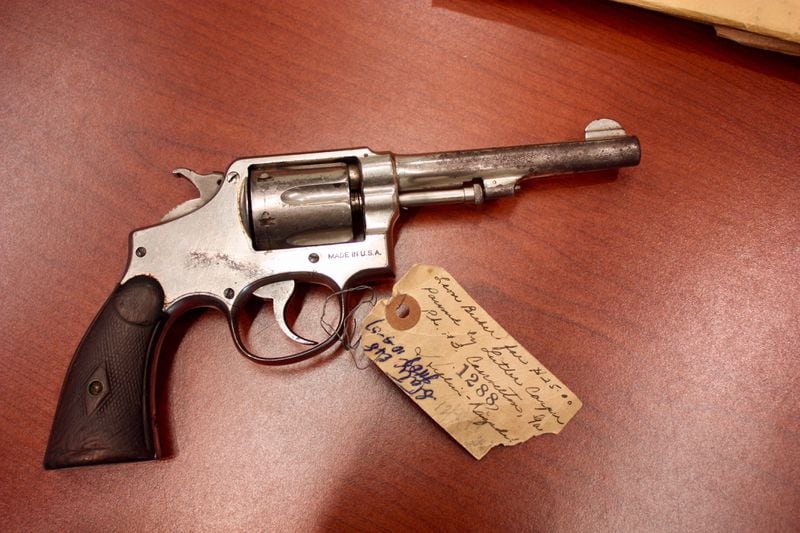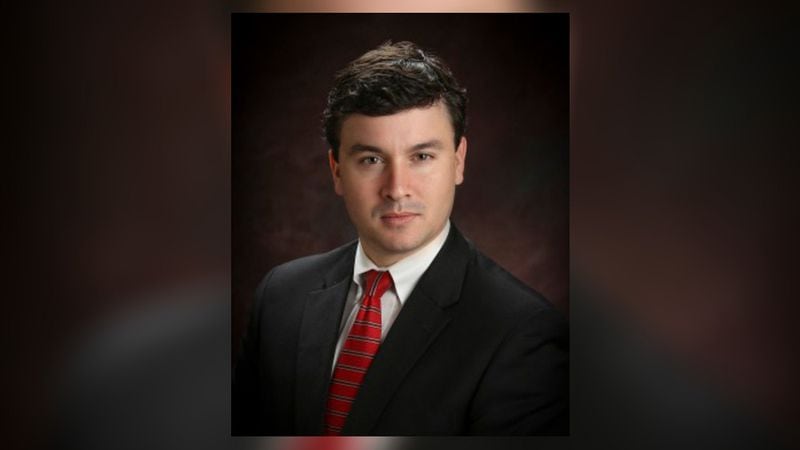The January 1950 murder trial that ended in a conviction of Black Carrollton sharecropper Clarence Henderson seemed ripped from a Southern Gothic potboiler.
He had been arrested less than a month earlier and charged with killing a white Georgia Tech student who had come home to Carrollton to visit his girlfriend. The trial was held under armed guard and before an all-white jury. The special prosecutor was the older brother of the judge.
The evidence against Henderson was entirely circumstantial. No witness put him at the scene and no one identified him as the murderer. The trial was over in a day’s time and the jury deliberated less than two hours before returning with a guilty verdict with no recommendation for mercy. The judge sentenced Henderson to death by electrocution.
At the end of his trial, Henderson took the stand, hat in his hand, and pleaded to be sent home to his wife and children.
“I’ve got something to live for,” he said, according to court transcripts. “Let me go home and raise my kids.”
A few months later, a new NAACP-backed defense team convinced the Supreme Court of Georgia to overturn the verdict, sending Henderson back to Carrollton for a new trial. Carroll County juries would render the same decision in two more trials held in the autumns of 1950 and 1951. Twice more the state’s highest court sent the case back.
Finally, on a chilly January morning in 1953, Henderson was allowed to post bond and leave jail, but the charges against him were never dropped.
Now, decades and generations later, Carroll County District Attorney Herb Cranford has launched a review of the case. It comes after the release of a book detailing weaknesses in the prosecution’s case.
Cranford said the age of the case matters less than seeing justice done.
“When a past case is brought to my attention, regardless of its age, and a credible claim can be made that the accused was wrongly charged or convicted, I believe the pursuit of justice includes reviewing the case to determine if an injustice occurred in the past,” said Cranford.
Details of the trials are recounted in “The Three Death Sentences of Clarence Henderson,” a book released earlier this year about the murder of 22-year-old Carl “Buddy” Stevens Jr., on Oct. 31, 1948, the manhunt that followed and Henderson’s fight for freedom with the help of the NAACP, and the biracial team of attorneys who came to his aid.
At the time of the murder, the case drew national headlines. But Cranford, who has been in office since 2018, said he didn’t know about it until the book was published. Now he is reviewing trial transcripts, Supreme Court opinions and other relics.
If he determines the evidence did not support the charges, Cranford said he could ask a judge to clear Henderson’s name.
“In this particular case, the fact that Mr. Henderson had his conviction overturned three separate times by the Georgia Supreme Court and the fact the state never sustained a conviction against him provides a sufficient basis in my view to review the case,” Cranford said.
Credit: File
Credit: File
Righting a historical wrong?
The state supreme court overturned Henderson’s convictions over courtroom errors and a general lack of evidence to support the conviction. After his third conviction was overturned in 1953, Henderson and his family were forced to leave Carroll County or face possible mob violence. But as the years passed, many of the details of the case had been lost to his family as well.
Clarence Henderson died 40 years ago.
Brandon Henderson, Clarence’s great-grandson, said the family knew he had been accused of killing a white man and that he had escaped the electric chair.
“This is the part of our history that we just don’t talk about, we smooth it over. It just happened,” said Brandon Henderson, who lives in Decatur.
Ernest Henderson, grandson of Clarence, knew his grandfather well, but said he never knew what to think about the Carrollton stories. Clarence Henderson was a hard man, who had scrapes with the law before being accused of murder. He was embittered about his years-long struggle with the murder accusation, Ernest Henderson said.
“He never talked about it,” he said.
As he learned the details of his ancestor’s trials, Brandon Henderson said he was “floored” by the inequality of the segregation-era courts and the overwhelming obstacles Clarence faced.
“It brought me to tears a couple times,” he said. “How can this judicial system in which we all are a part of simply turn a blind eye to something that is just outright wrong?”
Hank Klibanoff, an Emory University professor and director of the school’s Civil Rights Cold Cases Project, said addressing injustices from decades past is important, even when the victims and perpetrators are dead.
“There is a very important judgment that history can make,” he said.
There also is the chance for healing. Klibanoff and his Emory students have delved into several Jim Crow era racial killings and cold cases. In one case, the white descendant of one of the named murderers was so moved by their findings that he sought out the victim’s daughter to apologize.
“It went an enormous way to salving their wounds,” he said.
Ernest Henderson said it is too late to “solve” the case by finding Stevens’ actual murderer, but there are lessons to take away from clearing his grandfather of the crime.
“In due time, the truth always comes out,” he said.
A murder and a manhunt
Seventy-five years ago, the murder of Buddy Stevens upended Carrollton. The crime’s racial overtones reverberated far beyond the mill town, 60 miles west of Atlanta. The Atlanta Constitution ran a banner headline across its front page announcing the murder. News wire services carried the story across the nation.
Stevens had died protecting his 18-year-old girlfriend from a masked man, whom police said committed five rapes that year, each time leaving investigators without a description of the culprit. Stevens was the first victim to die in one of the attacks when he lunged at the masked man, saving his girlfriend.
The 18-year-old woman ran a half-mile in the dark through plowed fields to the nearest home for help. Stevens’ body was found an hour or more later with three bullet wounds, including a fatal shot to the chest.
Stevens’ girlfriend said she never saw her attacker but — either prompted by police or of her own volition — she said he “sounded like a Negro.”
Credit: File
Credit: File
State and local police began a massive manhunt that lasted weeks and spread across much of West and North Georgia. At least a half-dozen Black men were arrested and held in secret in jail cells in Atlanta and Newnan, but a year after the murder they had no viable suspects.
That changed in December 1949 when an Atlanta police detective, making routine checks of pawn shops, discovered a .38 Special revolver reported stolen during one of the Carrollton attacks preceding Stevens’ death. GBI investigators found a blind vegetable farmer who had pawned the pistol and traced the gun through a series of transactions back to Henderson, whom they said had the gun when Stevens was killed.
But there were serious problems with the state’s case from the start.
First, the bullet retrieved from Stevens’ body was a 9 mm automatic round that would not fit in a .38 revolver. And while the chain of custody linking the gun back to Henderson held up during his first trial, witnesses cross examined by Henderson’s defense team in his second trial seriously compromised the state’s timeline of the case.
Credit: Chris Joyner
Credit: Chris Joyner
The state might have executed Henderson after the first trial had it not been for the work of the NAACP, which raised money for his defense, hiring S.S. Robinson and E.E. Moore Jr., both pioneering Black lawyers from Atlanta’s “Sweet Auburn” district. They teamed up with a crusading white attorney Dan Duke, who was a former prosecutor for Fulton County and the Georgia Attorney General’s Office and had gone after the Georgia Ku Klux Klan.
Facing a white jury in the segregated South, Duke took the lead in the defense in the second trial and was Henderson’s only attorney in the third. Dorrie Fletcher, Duke’s daughter, said her father deeply believed in the promise of America and that people needed to be treated fairly under the law.
“I think part of it was the poverty he grew up with in the Depression,” she said. “Maybe in those struggles he had an empathy for the unfairness.”
Duke fought for months after the third conviction was overturned to get the charges dropped. In the end he was only able to get his client out on bond and the charges moved to the “dead docket,” a holding place for cases not being actively prosecuted.
That’s where the story ended until this year.
Credit: Coweta County DA Office
Credit: Coweta County DA Office
It is exceedingly rare for decades-old cases to be reopened, especially when the defendant is no longer alive to benefit from exoneration.
As he conducts the review, Cranford is inviting members of the Carrollton community to reach out to his office to voice their concerns. He said he especially would like to hear from any surviving members of Stevens’ family or the family of his girlfriend at the time “to explain to them why I’m reviewing the case, to hear their thoughts about the case, and to provide them with my assessment of the evidence.”
Brandon Henderson said it would be a healing experience to have his great-grandfather’s name cleared.
“Just knowing that he didn’t do it wasn’t enough,” he said. “Having the public to understand his innocence, and see the justice system truly do what it’s designed to do, it’ll warm my heart forever more.”
Learn more about this story
AJC investigative reporter Chris Joyner began researching the case of Clarence Henderson more than 20 years ago at his first reporting job at the Times-Georgian in Carrollton, spending nights and weekends poring over microfilmed editions of newspapers. He sought out court records, trial transcripts, NAACP legal records and oral histories, as well as numerous secondary sources about the period. He also traveled to Washington, D.C., to locate forgotten correspondence related to the case archived in the Library of Congress. He published his findings in the book “The Three Death Sentences of Clarence Henderson: A Battle for Racial Justice at the Dawn of the Civil Rights Era” released earlier this year.
